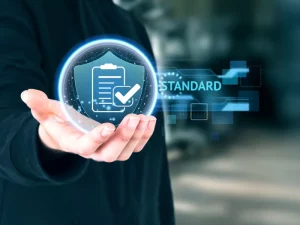In modern enterprises, where data is shared, stored, and transferred at lightning speed, not all information carries the same level of sensitivity. Yet many organizations treat it as if it does until a breach, leak, or insider error proves otherwise. This is where a Security Classification Guide (SCG) becomes indispensable. An SCG is not just a policy document; it’s a governance blueprint that defines how information should be categorized, handled, and protected based on its sensitivity and potential impact.
Defining What Truly Matters
Every organization manages vast amounts of data, some of which are confidential, operational, and publicly accessible. Without a clear classification structure, employees often struggle to determine what requires protection and what does not. A Security Classification Guide solves this confusion by setting out defined categories, such as Public, Internal, Confidential, and Restricted, and specifying how each should be stored, transmitted, or shared.
This framework ensures that employees across departments make consistent, informed decisions about data handling. It also supports compliance with regulations like GDPR, HIPAA, and ISO 27001, where data protection practices must be demonstrably structured and documented. In essence, an SCG turns abstract data security principles into an actionable, everyday discipline.
Reducing Insider Threats and Mismanagement
Not every security incident stem from an external hacker; many begin internally, with well-meaning employees who mishandle data simply because they were not sure of its importance. Security Classification Guides directly address this problem by minimizing ambiguity.
When employees understand how to classify and manage each piece of data, the risk of accidental exposure, unauthorized sharing, or policy violations drops dramatically. Furthermore, with automated data loss prevention (DLP) tools aligned to the SCG, organizations can enforce classification rules in real-time, alerting users or blocking actions that could endanger sensitive information. The result is a cultural shift: data protection becomes everyone’s responsibility, not just the IT department’s.
A Foundation for Corporate Governance and Compliance
Beyond immediate security benefits, an SCG forms the backbone of corporate governance. It provides auditors, regulators, and leadership teams with proof that data protection practices are systematic, intentional, and traceable. During audits or compliance reviews, having a Security Classification Guide demonstrates that the organization has a consistent policy linking data value to protection level, a crucial factor for avoiding penalties and preserving corporate reputation.
Moreover, as businesses increasingly operate across borders, SCGs help standardize practices across regions, ensuring that sensitive information is safeguarded consistently despite varying privacy laws or operational standards.
Building a Culture of Data Responsibility with Terrabyte
Implementing a Security Classification Guide is more than a technical initiative; it’s a governance milestone. It reflects an organization’s maturity in recognizing that security is not about restricting access but about managing trust responsibly.
At Terrabyte, we empower organizations to strengthen their cybersecurity posture through structured governance practices and intelligent data protection frameworks. With the right strategy and tools, your enterprise can build a culture where every piece of data is valued, protected, and handled with precision.




